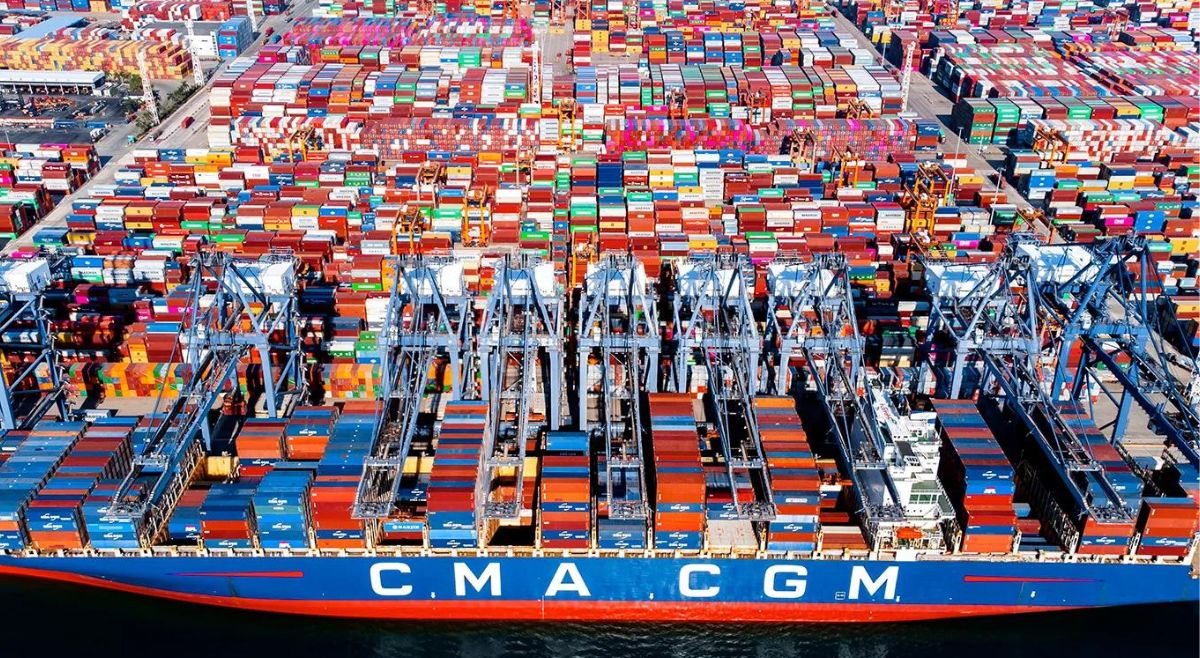Easing Supply Chain Disruptions with Informed Decision Making

COVID-19 and the Russian invasion of Ukraine have exposed the fragility of the global supply chain. There is a pressing need to increase the resiliency of this complex, interconnected network to prevent further shortages of food and consumer products. Ammar Aamer is an Associate Teaching Professor in the Master of Science in Project Management program at Northeastern University in Toronto with professional and research expertise in the field of supply chain management. We asked Professor Ammar to talk about his current research and his work with students in the context of ongoing supply chain uncertainties.
Could you talk about your professional background in supply chain management?
My background is in industrial engineering, but my early research focused on supply chain management. In my professional life, I worked in Gap Inc. Global Supply Chain & Product Operations. My practical work was in the distribution centers primarily used for warehousing and fulfillment. So that was my focus area: warehousing, operations, layout, optimization, and capacity planning. That’s how I started my interest in the distribution part of the supply chain
When you talk about the supply chain, you’re talking about the whole value stream: producers who extract raw materials, suppliers who create parts for manufacturing, and distributors who transport items to end-users (either wholesale or individuals). So, when you talk about distribution, you’re talking about a small component of the whole supply chain— receiving items, storing them, and distributing them to end-users.
Can you tell me about the research that you’re currently doing around supply chain management?
My current research is concentrated on the digitalization of the supply chain as part of the more extensive digital transformation process. Digital transformation could be in any industry, but my focus is mainly on digital transformation in the supply chain and the factors companies need to consider when making these transitions.
In this project, I am focused on emerging technologies such as Artificial Intelligence, Cloud Computing, and the Internet of Things (IoT). I got interested in the IoT because one of the issues in the supply chain is the visibility and transparency of data as products move through the system. IoT devices are essentially sensors that record information that is then stored in the cloud. We can analyze this information and use it to make decisions about the supply chain. Machine Learning (part of Artificial Intelligence) can be used to process this data and make informed decisions. Data analysis and predictive modeling are not new, but with technological advancements, we can now make decisions in real-time.
How does this project promote real-time decision making?
What we are trying to do is design and apply a low-cost IoT device to track parameters and manage logistics within the food supply chain, the name of this project is Smart Food Logistics (SFL). Say you are a Tomato farmer; our device can potentially track your produce from harvest to storage to end-user. The device (which is mounted on delivery vehicles) tracks a range of parameters, including temperature, humidity, alcohol levels, location, and light intensity. All these parameters are critical for food quality. For example, the presence of higher-than-normal alcohol levels could indicate fermentation from spoiling fruit. And the higher temperature and humidity levels lead to tomatoes that do last as long on store shelves.
There are companies out there doing similar things, but we are trying to enhance these devices by adding more parameters and by finding ways to reduce the cost of the device. We also have expertise in project management and supply chain logistics, giving us insight into using data to reform and refine complex food transportation systems. With the support of the Office of the Provost and the Leadership and Project Management domain within the College of Professional Studies, we have established the Digital Transformation Research Lab at the Toronto Campus. We have purchased the required components and hired two students to assemble and test the device and expand the project.
There has been a lot of talk about the need to reform or secure supply chains in the face of increasing global instability. Do you agree with this assessment? What changes do you think may be necessary going forward?
When I started in the field of supply chain management, there was a lot of focus on the concept of outsourcing. Companies were outsourcing the manufacturing of components and products. That’s why you saw a lot of movement going to Mexico and South American territories initially and then later to Asian countries like China and Vietnam. The mentality was outsourcing, cost optimization, efficiency, and being as lean as possible. Globalization meant focusing on core competencies and outsourcing anything outside of that. I think many organizations went too lean. There was too much reliance on outsourced products and components, and we have felt the impact due to the COVID-19 pandemic and the restrictions it created.
What is the role of digitalization projects, like the one you are currently developing, in reforming the global supply chain system?
We need to revisit the design of the supply chain network and make it more resilient and agile. We can no longer afford to have one hundred percent reliance on one source. Lean supply chain concepts rely on long-term relationships with a single supplier. We need to re-strategize how we manage supply chains and begin to develop multiple supply sources for products. Building in backups and redundancies is the solution moving forward. Digitalization is only a way to help us do that. Artificial intelligence will not solve the issue of outsourcing, but it will help us make informed decisions.




